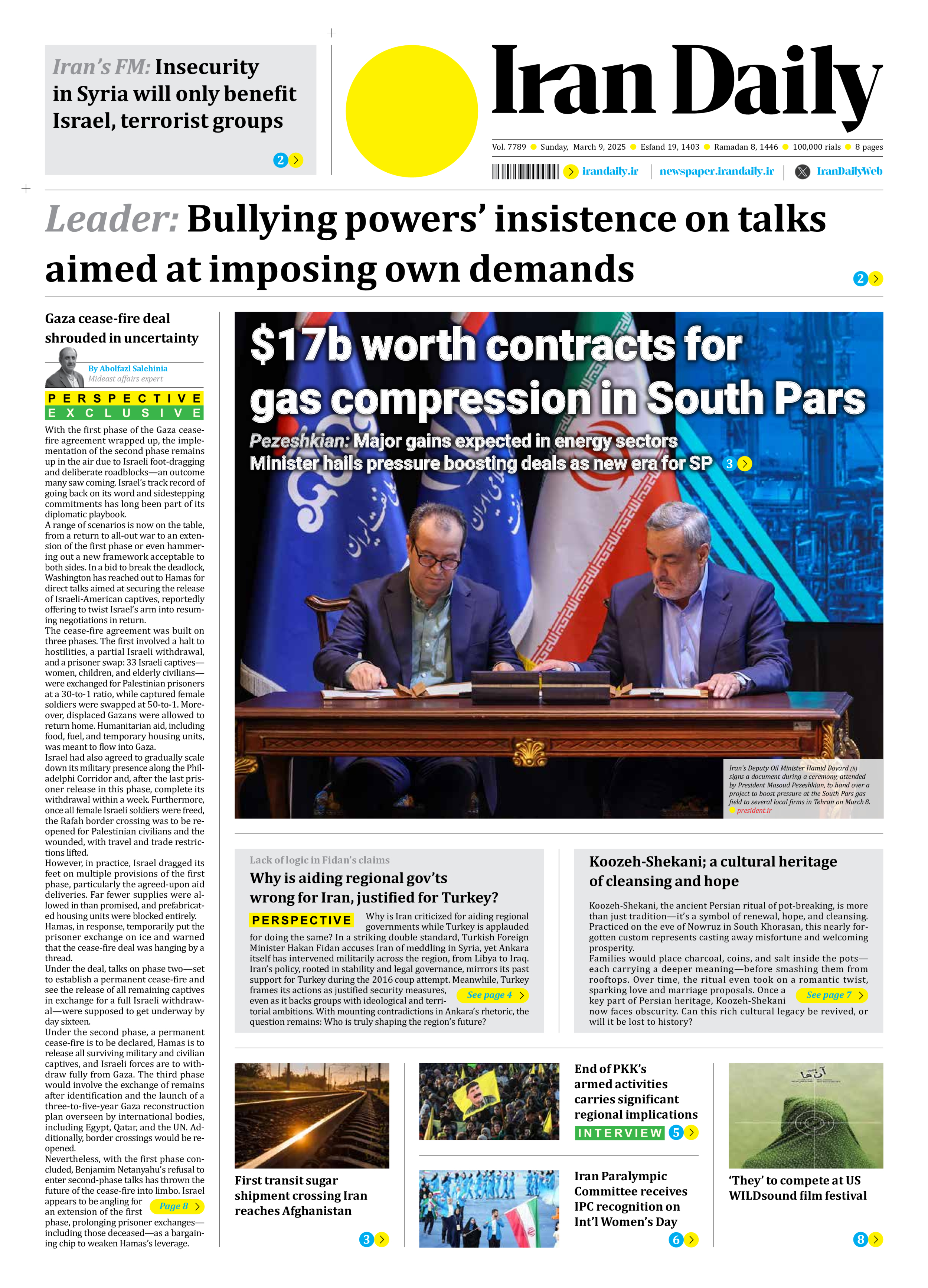
Gaza cease-fire deal shrouded in uncertainty
By Abolfazl Salehinia
Mideast affairs expert
With the first phase of the Gaza cease-fire agreement wrapped up, the implementation of the second phase remains up in the air due to Israeli foot-dragging and deliberate roadblocks—an outcome many saw coming. Israel’s track record of going back on its word and sidestepping commitments has long been part of its diplomatic playbook.
A range of scenarios is now on the table, from a return to all-out war to an extension of the first phase or even hammering out a new framework acceptable to both sides. In a bid to break the deadlock, Washington has reached out to Hamas for direct talks aimed at securing the release of Israeli-American captives, reportedly offering to twist Israel’s arm into resuming negotiations in return.
The cease-fire agreement was built on three phases. The first involved a halt to hostilities, a partial Israeli withdrawal, and a prisoner swap: 33 Israeli captives—women, children, and elderly civilians—were exchanged for Palestinian prisoners at a 30-to-1 ratio, while captured female soldiers were swapped at 50-to-1. Moreover, displaced Gazans were allowed to return home. Humanitarian aid, including food, fuel, and temporary housing units, was meant to flow into Gaza.
Israel had also agreed to gradually scale down its military presence along the Philadelphi Corridor and, after the last prisoner release in this phase, complete its withdrawal within a week. Furthermore, once all female Israeli soldiers were freed, the Rafah border crossing was to be reopened for Palestinian civilians and the wounded, with travel and trade restrictions lifted.
However, in practice, Israel dragged its feet on multiple provisions of the first phase, particularly the agreed-upon aid deliveries. Far fewer supplies were allowed in than promised, and prefabricated housing units were blocked entirely.
Hamas, in response, temporarily put the prisoner exchange on ice and warned that the cease-fire deal was hanging by a thread.
Under the deal, talks on phase two—set to establish a permanent cease-fire and see the release of all remaining captives in exchange for a full Israeli withdrawal—were supposed to get underway by day sixteen.
Under the second phase, a permanent cease-fire is to be declared, Hamas is to release all surviving military and civilian captives, and Israeli forces are to withdraw fully from Gaza. The third phase would involve the exchange of remains after identification and the launch of a three-to-five-year Gaza reconstruction plan overseen by international bodies, including Egypt, Qatar, and the UN. Additionally, border crossings would be reopened.
Nevertheless, with the first phase concluded, Benjamim Netanyahu’s refusal to enter second-phase talks has thrown the future of the cease-fire into limbo. Israel appears to be angling for an extension of the first phase, prolonging prisoner exchanges—including those deceased—as a bargaining chip to weaken Hamas’s leverage.
Page 8







